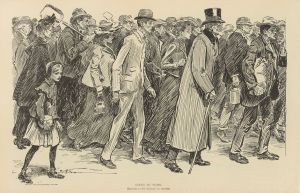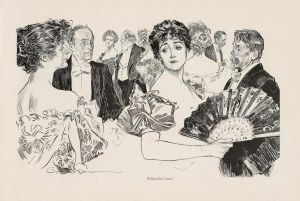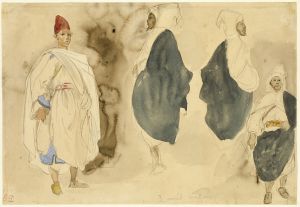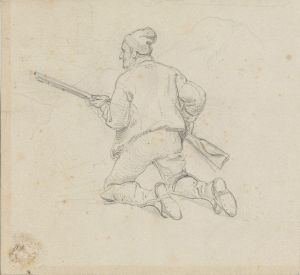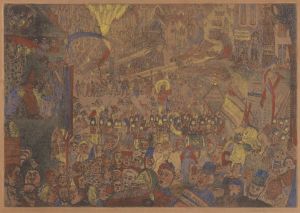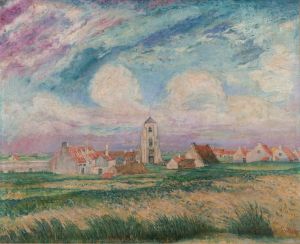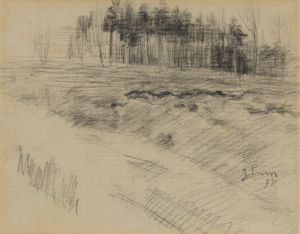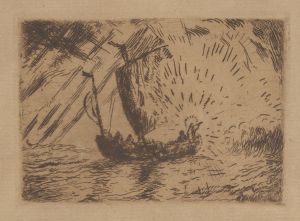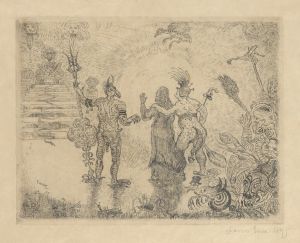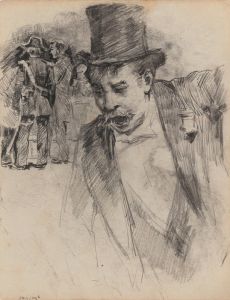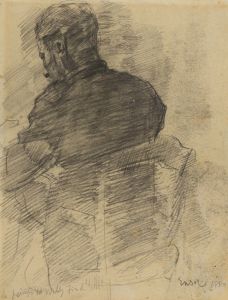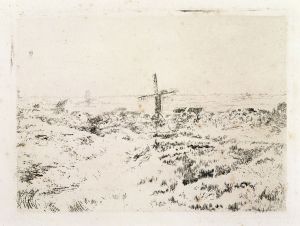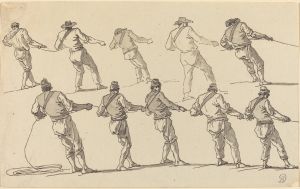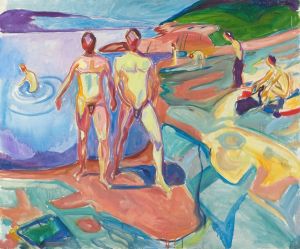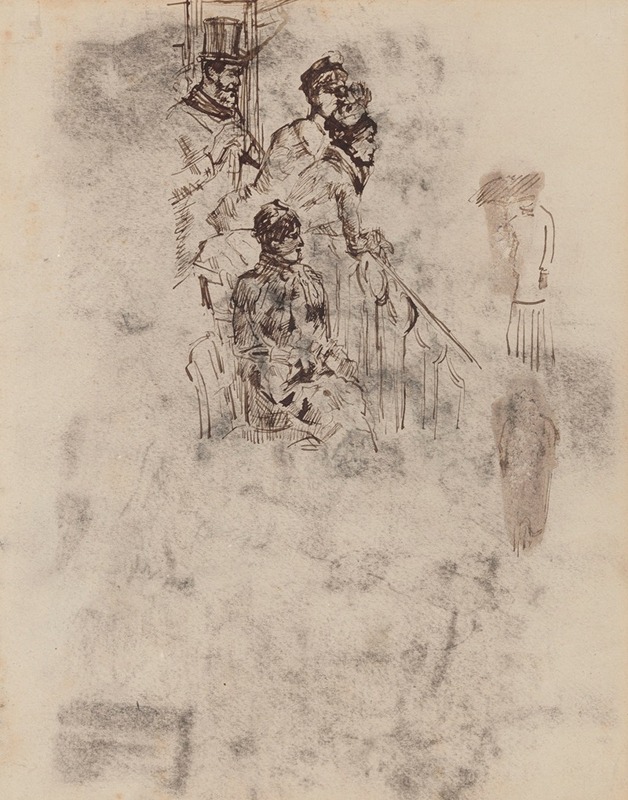
Two Militairy Men
A hand-painted replica of James Ensor’s masterpiece Two Militairy Men, meticulously crafted by professional artists to capture the true essence of the original. Each piece is created with museum-quality canvas and rare mineral pigments, carefully painted by experienced artists with delicate brushstrokes and rich, layered colors to perfectly recreate the texture of the original artwork. Unlike machine-printed reproductions, this hand-painted version brings the painting to life, infused with the artist’s emotions and skill in every stroke. Whether for personal collection or home decoration, it instantly elevates the artistic atmosphere of any space.
"Two Military Men" is a painting by the Belgian artist James Ensor, created in 1880. Ensor, born in 1860 in Ostend, Belgium, was a prominent figure in the Symbolist movement and is known for his unique and often provocative style that combines elements of realism, impressionism, and surrealism. His works frequently explore themes of death, masks, and the grotesque, reflecting his fascination with the macabre and the absurd.
The painting "Two Military Men" depicts two soldiers dressed in military uniforms. Ensor's choice of subject matter reflects his interest in the human condition and societal roles. The soldiers are portrayed with a sense of ambiguity, as their expressions and postures do not conform to the typical heroic or stoic depictions of military figures. Instead, Ensor imbues them with a sense of individuality and vulnerability, challenging the viewer's perception of military life and the people who serve.
Ensor's technique in "Two Military Men" showcases his skillful use of color and light. The painting features a rich palette, with deep reds, blues, and greens that create a striking contrast against the more muted background. This use of color not only highlights the figures but also adds a layer of emotional depth to the scene. Ensor's brushwork is both precise and expressive, capturing the textures of the uniforms and the subtle nuances of the soldiers' faces.
The painting is also notable for its composition. Ensor places the two figures in close proximity, creating a sense of intimacy and connection between them. This compositional choice emphasizes the personal and human aspects of their experience, rather than focusing solely on their roles as soldiers. The background, while less detailed, provides context and depth to the scene, suggesting a setting that is both specific and universal.
"Two Military Men" is an important work within Ensor's oeuvre, as it exemplifies his ability to blend realism with symbolic and emotional elements. The painting reflects his broader artistic concerns with identity, society, and the human experience. Ensor's work was often ahead of its time, and his influence can be seen in the development of modern art movements such as expressionism and surrealism.
James Ensor continued to create provocative and innovative art throughout his career, and his contributions to the art world were recognized with numerous accolades. He was knighted by King Albert I of Belgium in 1929 and was made a baron in 1933. Ensor's legacy endures, and his works are held in major museums and collections around the world.
"Two Military Men" remains a testament to Ensor's unique vision and his ability to capture the complexities of the human condition through his art.





